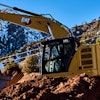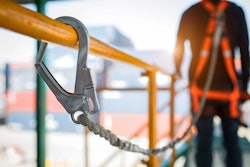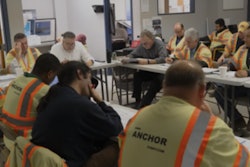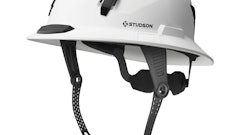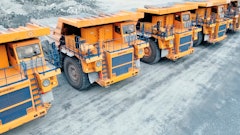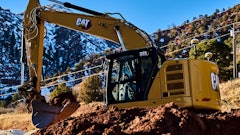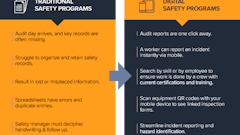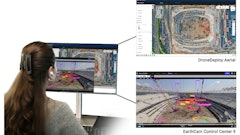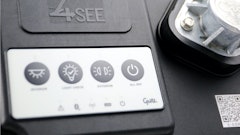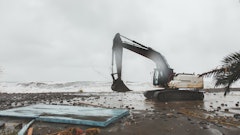
Busy constructions sites are a gauntlet. In any given shift, workers may have to navigate between excavators swinging loads, delivery trucks reversing into tight spaces and forklifts moving heavy pallet loads back and forth. In these high stakes environments, safety systems are deployed with the very best of intentions – preventing collisions, protecting pedestrians and keeping projects firmly on track. But even the most advanced safety features can become part of the problem if they’re misunderstood, misapplied or overcompensating for a lack of accuracy with frequent false alarms. A warning that arrives too late, or an alert that sounds too often for the wrong reasons, can dull a worker’s instincts rather than sharpen them. The result is a dangerous paradox, where technology designed to make construction safer can, under the wrong conditions, introduce new points of failure risk.
According to the US Bureau of Labor Statistics, in 2023 there were 5,283 fatal work injuries across all US industries, of which 1,075 occurred in construction. That means about one in five workplace deaths happened in the construction sector, with “struck-by” and “caught-in/between” incidents ranking among the deadliest hazards. Many of these events occurred in settings where safety protocols were in place, but where human factors – distraction, over-familiarity or a lack of trust in safety technology – tipped the balance. On the ground, this translates into a reality that many construction managers now quietly acknowledge: no matter how sophisticated the systems are, there is no substitute for situational awareness, consistent operator engagement and technology designed with the real-world messiness of a construction site in mind.
In mining, a very similar environment plagued by many of the same incidents, a university-backed research paper revealed that constant exposure to audible alerts was one of the main contributors to mental fatigue. In some of these cases, response times slowed by up to 20 percent. As unusual as it might sound, simply adding more alerts and more layers of safety isn’t the answer. We need to look at how those alerts and layers operate and ensure they’re supporting workers, rather than burdening them.
The ‘Smart’ Warehouse Problem
The construction industry has been quick to borrow digital safety concepts from other industrial settings, particularly “smart” warehouses where automation, sensors and tracking systems have become standard. On paper, these tools promise a safer, more controlled environment, but while these systems can work in the regimented and repetitive workflows of a warehouse, they can falter on the more unpredictable construction site. Building projects are constantly changing, with shifting layouts, temporary access routes, and equipment moving between zones, creating blind spots that static or overly rigid safety systems fail to cover.
The danger lies in the false sense of security such systems can create. Site managers and operators may assume that a sensor network or geofenced zone is catching every risk, when those systems may only be monitoring the conditions, they were programmed to anticipate. A proximity sensor that works flawlessly in a flat, indoor environment may misinterpret scaffolding, machinery or debris as a hazard or fail to detect a worker partially obscured by materials. Over time, this mismatch between perceived and actual coverage can erode vigilance or trust, leaving workers and supervisors exposed.
Outdated Safety Protocols
Many construction sites still operate under safety protocols that were designed decades ago, long before the advent of real-time hazard reporting, wearable sensors or AI-driven monitoring systems. While the fundamentals, such as lockout/tagout procedures and equipment spotters, remain essential, they often fail to address the pace and complexity of modern sites. A job site today may involve dozens of subcontractors, overlapping work zones and heavy machinery working alongside foot traffic in tight spaces. Without up-to-date protocols that reflect these realities, there’s a risk that safety plans will become little more than paperwork.
Digitizing hazard reporting, sequencing activities more intelligently, and linking safety plans directly to live operational data can dramatically improve their effectiveness. But on many sites, reporting still happens at the end of a shift, meaning hazards go unaddressed for hours or even days. Similarly, generic safety checklists often fail to capture the unique risk profile of each project phase, leaving workers to make judgment calls without clear, site-specific guidance.
When Alarms Become White Noise
Safety alerts are meant to be an unmistakable signal that something is dangerously wrong. But if systems sound too often for minor or non-existent issues, they become white noise – ignored at best and distractions at worst. Over time, operators learn to tune out these false positives, treating them as an annoyance rather than a prompt for action.
It’s not that these systems are poorly configured, it’s that they lack the precision to be able only raise the alarm when there is a real and imminent threat to life. But technology like machine vision and AI-based detection have come on leaps and bounds, virtually eliminating this problem for those ready to implement it.
Why Smart Tech Needs Dumb Interfaces
While AI-powered monitoring can perform extraordinary feats in the background, from distinguishing human movement from machine motion to predicting collision trajectories, the way those insights are delivered to workers matters just as much as the accuracy of the data. A well-trained model loses its value if its alerts are buried or require an operator to interpret multiple data points before acting. In the seconds it takes to decipher a complex interface, a hazard can already have turned into an incident.
The most reliable systems remove ambiguity entirely. Instead of demanding a worker’s attention with a flood of visual data, they use clear cues – a flashing LED that can be seen from any angle, a distinctive audio signal, a spoken alert that names the hazard. On a busy site where noise is constant, lines of sight are often blocked, and attention is constantly divided, these more clear alerts can cut through the chaos more effectively than the most advanced display. Simplicity isn’t a compromise here – it’s potentially life-saving.
Less is More
If construction safety is to keep pace with the scale and speed of modern projects, the goal shouldn’t be to add more alarms, more dashboards or more layers of protocol. The goal should always be to create systems that workers instinctively trust and act on. Every alert and process should carry the weight of credibility, so that when it activates there’s no doubt in anybody’s mind that it matters. Stop building safety systems for safety’s sake and start building them for the specific environments and personnel they’re meant to protect.




